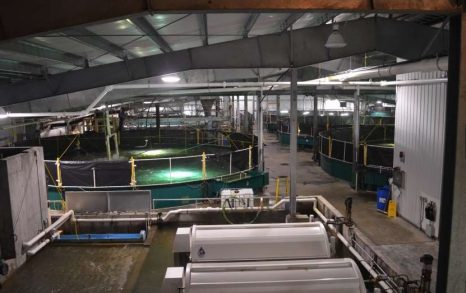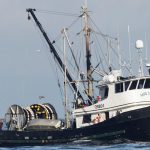Daily Archives: March 27, 2018

Fishing Vessel Sees Large Fuel Savings
The 305-foot factory trawler f/v Golden Alaska is powered by twin MAK six-cylinder engines and has a large boiler used to support large fishmeal-fish oil processor and hoteling galley needs of the 130-person crew and factory personnel. The vessel is in its fourth year and eighth pollock season using the Fitch Fuel Catalyst on output of dual centrifuges for a 5,300-gallon day tank. They get approximately 18 months service from each core and now are on their third one. >click to read< 21:58

Fisheries Minister Leblanc to make decision on northern cod fishery in April, says seals are a big factor
With cod stocks again on the decline — by a shocking 30 per cent, according to the Department of Fisheries and Oceans (DFO) — the federal fisheries minister says a decision about the fishery will be made within two weeks. Dominic Leblanc said there are a series of factors at play, but one is the grey seal — an animal thought to cause as much as 50 per cent of natural deaths among full-size cod, according to DFO scientists. “There’s no doubt that the seals represent a significant challenge,”,,, >click to read<19:18

Herring fishery underway near Prince of Wales Island
Fishing has started in another commercial herring fishery in Southeast Alaska this month. Fishery managers expect herring could be starting to spawn this week in a spawn-on-kelp fishery near Craig and Klawock on Prince of Wales Island. The guideline harvest level is a big increase from last year, set at 1,667 tons. That includes 742 tons not caught in a herring food and bait fishery this winter. “After quite a downturn from last year, we’re seeing a real strong presence of fish out here,,, >click to read<18:42

This Canadian First Nations group wants you to buy salmon raised on land
Alert Bay isn’t exactly a premier destination on British Columbia’s rugged Pacific Coast. On this winter day, there are more crows than people on the town’s wooden sidewalks, and most of the few small businesses near the waterfront are closed for the season. The biggest building is an abandoned salmon cannery, a reminder of what used to be here. It’s a past that Bill Cranmer remembers well.,, For centuries, he says, salmon sustained the Namgis’ lives and culture.,, Cranmer says if he and his Namgis First Nation people had their way, they’d get rid of open-water salmon farms. But they can’t, so they’re trying another idea for rebuilding a salmon economy for their community. They’ve built their own salmon farm — on land. >click to read<15:26

“Marine skin” wearable technology tracks underwater creatures
Wearables are normally connected devices like smartwatches or shirts that people wear. Researchers are expanding wearables to cover underwater creatures as well with a new wearable sensor that could help track whale sharks and dolphins in the future. The crab you see here was one of the first test subjects for a new lightweight sensor tag that could track animal movement in deep ocean environments. The sensor is dubbed “Marine Skin” and is designed to be glued to the outer shell or skin of an animal. >click to read<11:42

New criticism surrounds federal decision to break Arctic surf clam monopoly
One month after the federal fisheries minister announced a new licence for an important clam fishery would be awarded to a partnership of Indigenous groups from across Atlantic Canada, the government is facing fresh criticism over how it awarded the licence, and for the Liberals’ perceived ties to the winning bidder. The decision to award one-quarter of the Arctic surf clam quota to a partnership that included Indigenous communities was intended to further reconciliation by helping First Nations gain a foothold in a lucrative market and to break the monopoly on Arctic surf clams that has been held by Halifax-based Clearwater Seafoods. >click to read<10:10



















































